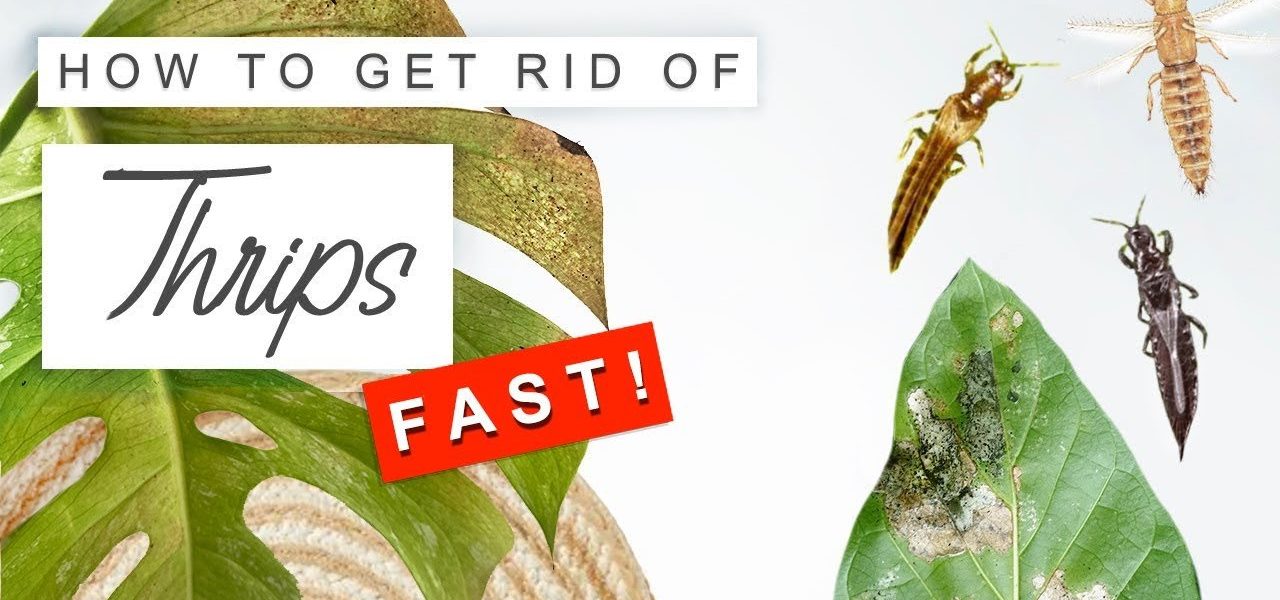To kill thrips effectively, you need a strategic approach that targets these tiny pests at the root of the problem. Thrips can wreak havoc on your plants, causing damage that can stunt growth and diminish overall health. By implementing specific methods and treatments, you can eliminate thrips and safeguard your greenery. Ready to learn the best practices on how to kill thrips and protect your garden from these troublesome insects? Let’s dive into effective solutions that will help you combat thrips and keep your plants thriving.
How to Kill Thrips: A Comprehensive Guide
Welcome to our guide on eliminating those pesky thrips that may be wreaking havoc on your plants. Thrips are tiny insects that can cause significant damage to gardens, crops, and houseplants. In this article, we will discuss various methods and strategies to effectively get rid of thrips and prevent future infestations. Let’s dive in!
Identifying Thrips Infestation
Before we delve into how to effectively kill thrips, it’s crucial to first identify if your plants are indeed infested with these tiny pests. Thrips are slender insects, usually about 1-2 mm long, and can vary in color from yellow to black. They feed by puncturing plant tissues and sucking out the juices, leaving behind silver or bronze-colored streaks on leaves.
Inspect the undersides of leaves, especially near the veins, for signs of thrips. You may also notice tiny black dots (thrips excrement) on the leaves. Once you confirm a thrips infestation, it’s time to take action.
Organic Methods to Combat Thrips
If you prefer using natural and organic solutions to tackle thrips, there are several effective methods at your disposal. These methods are safe for the environment, pets, and beneficial insects. Let’s explore some organic ways to kill thrips:
1. Neem Oil Spray
Neem oil is a natural insecticide that disrupts thrips’ lifecycle and acts as a repellent. Mix neem oil with water according to the instructions on the product label and spray it on the affected plants, focusing on the undersides of leaves where thrips tend to hide.
2. Insecticidal Soap
Insecticidal soap is another effective organic solution for controlling thrips. Spray the soap solution directly on thrips-infested plants, making sure to cover all parts of the plant thoroughly. The soap works by suffocating the insects on contact.
Chemical Solutions for Thrips Control
If the thrips infestation is severe or persistent, you may consider using chemical insecticides as a last resort. It’s essential to follow the instructions on the product label carefully and take necessary precautions when using chemical solutions. Here are some common chemical methods to kill thrips:
1. Pyrethroid Insecticides
Pyrethroid insecticides are commonly used to control thrips infestations. These chemicals act quickly to kill thrips on contact. However, be cautious when using pyrethroids, as they can also harm beneficial insects such as bees.
2. Systemic Insecticides
Systemic insecticides are absorbed by the plant and provide long-lasting protection against thrips. When thrips feed on plants treated with systemic insecticides, they ingest the toxic chemicals, ultimately leading to their demise. However, be mindful of the potential environmental impacts of systemic insecticides.
Preventative Measures to Avoid Thrips Infestations
Prevention is key to avoiding future thrips infestations. By taking proactive measures, you can protect your plants from these damaging pests. Here are some preventative steps you can take:
1. Keep Your Garden Clean
Thrips are attracted to weeds and debris, so it’s essential to keep your garden clean and free of clutter. Remove any dead or decaying plant matter that could serve as a breeding ground for thrips.
2. Introduce Beneficial Insects
Ladybugs, lacewings, and predatory mites are natural predators of thrips and can help keep their populations in check. Consider introducing these beneficial insects into your garden to reduce thrips infestations organically.
3. Monitor Your Plants Regularly
Regularly inspect your plants for signs of thrips or other pests. Early detection can help you address the issue before it escalates into a full-blown infestation. Consider using yellow or blue sticky traps to monitor thrips activity.
Thrips can be a nuisance for gardeners and plant enthusiasts, but with the right strategies and methods, you can effectively eliminate these troublesome pests. Whether you opt for organic solutions, chemical insecticides, or preventative measures, combating thrips requires patience and persistence. Remember to always follow safety guidelines when using any pest control products and prioritize the health of your plants and the environment.
We hope this comprehensive guide on how to kill thrips has equipped you with the knowledge and tools to protect your plants and keep thrips at bay. Happy gardening!
THRIPS?! How to kill thrips and save your grow.
Frequently Asked Questions
What are thrips and why are they harmful to plants?
Thrips are tiny, slender insects that feed on plants by puncturing and sucking out the sap. They cause damage to the leaves, fruits, and flowers, leading to distorted growth, discoloration, and even plant death.
How can I identify thrips infestation on my plants?
You can identify thrips infestation by looking for silvering on the leaves, tiny black feces, distorted growth, and silvery patches on the plant surfaces. Thrips are also often visible to the naked eye, especially on the undersides of leaves.
What are some natural ways to get rid of thrips?
You can introduce beneficial insects like ladybugs or lacewings that eat thrips. Neem oil, insecticidal soaps, and horticultural oils are also effective in controlling thrips infestations. Additionally, regularly pruning and disposing of infested plant parts can help reduce thrips populations.
How do chemical insecticides help in eliminating thrips?
Chemical insecticides containing active ingredients like spinosad, pyrethroids, or acephate can be used to kill thrips effectively. These insecticides should be applied according to the manufacturer’s instructions, focusing on the undersides of leaves where thrips tend to hide.
Final Thoughts
To effectively eliminate thrips, try using insecticidal soap or neem oil on affected plants. Regularly inspect and remove any infested plant parts to prevent further spread. Introducing beneficial insects like ladybugs can also help control thrip populations naturally. Remember, maintaining good plant hygiene and minimizing stress on plants can make them less susceptible to thrips. Incorporating these strategies into your pest management routine will help you successfully kill thrips and protect your plants.





